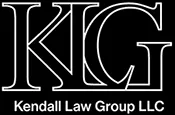
What Kansas City Drivers Should Do If They Are Incorrectly Listed at Fault for a Car Accident
Many Kansas and Missouri drivers only learn that they have been incorrectly marked as “at fault” for a prior auto accident when they apply for new auto insurance. This discovery often comes as a surprise and can lead to increased premiums, fewer coverage options, and potential financial complications. While the situation is frustrating, it is not irreversible.
At Kendall Law Group, we represent individuals who have suffered serious injuries due to the negligence of others. Although we do not represent clients in these insurance correction matters, we believe all drivers should be informed and empowered to address such errors independently.
Why Fault Assignments Matter to Insurance Companies
When applying for a new auto insurance policy, insurance providers review your accident history as part of their risk assessment process. If you have been listed incorrectly as the at-fault party in a prior accident, the consequences can include:
- Higher premiums
- Reduced access to competitive policy options
- Unfair risk categorization
Because Missouri uses a pure comparative fault system and Kansas follows a modified comparative fault system, even an inaccurate fault designation can impact not only your insurance but your potential legal standing in future claims.
Common Reasons Drivers Are Incorrectly Listed at Fault
Inaccurate fault determinations can result from a variety of factors, such as:
- Errors in the police report
- Misinterpretations by insurance adjusters
- One-sided statements from other drivers
- Lack of follow-up or dispute at the time of the incident
- Clerical mistakes in reporting systems
Even small discrepancies in official records can lead to long-term financial consequences. That is why correcting errors promptly is important.
Steps to Take to Address Discrepancies
Step 1: Review Your Claims and Driving History
To begin the correction process, gather all documentation related to your driving and claims history. This includes:
CLUE Report (Comprehensive Loss Underwriting Exchange)
This report, maintained by LexisNexis, contains your auto insurance claim history for the past seven years. It is one of the primary tools insurers use when evaluating new applicants.
You may request a free copy of your CLUE report once every 12 months HERE
Driving Record
Request your driving record from your state’s Department of Revenue:
Police Report
If a police officer responded to the accident, obtain the report from the law enforcement agency that handled the incident. Review it for any factual errors or omissions.
Carefully review all these documents to determine where the incorrect fault designation originated.
Step 2: Contact the Insurance Company That Handled the Original Claim
Once you have identified the source of the error, contact the insurance provider that managed the initial claim. Request a complete copy of the claim file and any documentation they used to assign fault, such as:
- Diagrams
- Photographs
- Witness statements
- Police report excerpts
- Adjuster notes
Write a formal letter disputing the fault determination. Include:
- The date and location of the accident
- Your policy and claim number
- A summary of the facts
- Supporting evidence
- A request that the claim be corrected and updated with third-party data collectors, such as LexisNexis
Keep copies of all correspondence for your records and consider using certified mail for documentation.
Step 3: Dispute the CLUE Report with LexisNexis
If the insurer refuses to correct the claim or fails to respond, you can file a dispute directly with LexisNexis. Under the Fair Credit Reporting Act (FCRA), 15 U.S.C. § 1681i(a) (FCRA), LexisNexis does not independently determine fault but is required to investigate any disputed data and update records if errors are found or validated through documentation.
Submit your dispute with LexisNexis HERE
Include all relevant documents, such as:
- A detailed letter outlining the error
- Supporting documents (photos, revised police reports, witness statements)
- Communication you had with the insurance company
If your dispute is found to be valid, LexisNexis will be required to correct the information on your CLUE report.
Step 4: Address Errors in the Police Report (If Applicable)
Police reports can carry significant weight, even if they are not the final word in determining fault. If the report contains factual errors or leaves out key details, contact the law enforcement agency that issued it. Some departments may allow:
- A supplemental statement from you
- A request for amendment
- Submission of additional documentation for the file
While not all agencies allow changes, even a supplemental note clarifying your version of events may be helpful when dealing with insurers and third-party data collectors. Note that while you may submit a supplemental statement, most agencies will not revise officer-assigned fault conclusions unless a clear factual error is present.
Step 5: Monitor Your Records and Follow Up
Once corrections have been submitted, continue to monitor your records to confirm that the updates have been made. It is advisable to:
- Request a new CLUE report after 60–90 days
- Check your driving record for updates
- Document all communications in case further disputes arise
If the issue persists despite your efforts, consider filing a complaint with your state’s Department of Insurance.
In Kansas, the Insurance Commissioner oversees consumer protection under the Kansas Insurance Code (K.S.A. § 40-2,125 et seq.), which establishes procedures for addressing unfair claim settlement practices and inaccurate reporting by insurers. You can file a complaint HERE
In Missouri, complaints can be escalated to the Missouri Department of Commerce and Insurance (DCI), which regulates insurer conduct and enforces policyholder rights under the Missouri Insurance Code.
When Legal Representation Is Appropriate
While Kendall Law Group does not assist with insurance correction or claims dispute issues, we focus our legal representation on helping individuals who have suffered serious injuries due to the negligence of others. If you or a loved one has been significantly injured in a car accident caused by someone else’s carelessness, and you are seeking legal action for recovery, our skilled Kansas City auto accident injury trial lawyers are here to help.
For issues related solely to correcting insurance claims or fault assessments, consumers are generally able to resolve the matter directly with insurers or data reporting agencies using the steps outlined above.
Final Thoughts
An inaccurate fault designation on your auto accident history can have long-lasting effects, especially when applying for insurance. Fortunately, there are well-established channels available for disputing and correcting those errors. Kansas and Missouri drivers are encouraged to:
- Obtain and review their CLUE and driving records
- Dispute inaccuracies directly with insurers and LexisNexis
- Request corrections to police reports where necessary
- Maintain organized documentation throughout the process
Proactively managing your accident history is one of the most effective ways to ensure you are treated fairly by insurance companies.
Kansas City Auto Accident Injury Attorneys
If you or your loved one has sustained serious injuries in a motor vehicle accident caused by another driver’s negligence, the experienced, knowledgeable and aggressive auto accident injury trial lawyers at Kendall Law Group are here to help you put your life back together. Our attorneys represent individuals and families in Kansas City and throughout Missouri and Kansas who are navigating life-altering injuries after collisions involving cars, trucks, motorcycles, pedestrians, trains or other vehicles. We are committed to pursuing full and fair compensation for our clients’ medical expenses, lost income and long-term care needs.






